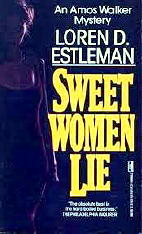REVIEWED BY DAN STUMPF:

THE BROKEN STAR. United Artists, 1956. Howard Duff, Lita Baron, Bill Williams, Douglas Fowley, Henry Calvin, Addison Richards, Joel Ashley, John Pickard, Joe Dominguez. Written by John C. Higgins. Directed by Lesley Selander.
Back in the late 1940s, John C. Higgins wrote some memorable film noir scripts turned into riveting movies by Anthony Mann: T-Men, Raw Deal, Railroaded and Border Incident, as well as He Walked by Night. In the 50s, his output became more variable with things like Shield for Murder, The Black Sleep and Untamed Youth, capped off in the mid-60s by Robinson Crusoe on Mars. And somewhere in and among these he recycled his Shield for Murder script into a Western called The Broken Star.

This opens with Deputy Sheriff Howard Duff scoping out an illicit money drop used by the local cattle baron to store his ill-gotten goodies; which, it seems, are also ill-guarded by a lone Mexican who passes quickly and noisily out of the story when Duff guns him down and makes it look like self-defense.
But when Duff stashes the loot and gives his story to his boss (Addison Richards) he’s met with professional skepticism. Richards sends Deputy Bill Williams out to investigate the scene, where he (Wiliams) runs into two goons — excuse me: owlhoots — in the employ of the Cattle Baron, who wants his ill-guarded gains gotten back.

Meanwhile Duff has his own problems with the murdered man’s sister: a fiery Mexican Maiden who sings in the local saloon and does a specialty number with a whip. (We’ve all had relationships like that, haven’t we?) The kind of girl I used to date in college. Before long, the hired goons/owlhoots have summoned Duff to a meeting with Mister Big/Cattle Baron, a genial and unsavory sort who reminds one of Sydney Greenstreet or perhaps Robert Emhardt in Underworld USA, squeezing the local ranchers in between hosting barbecues and making threats while calling the steps at a square dance. And when he smiles and tells Howie he wants his money back, we know the jig is up.

What follows however is a bit of a mess. The goons kidnap Lita, Howard fights them, Deputy Bill fights them, they kidnap Litas again, Bill fights them again, Howard fights Bill, Howard tries to grab the loot and hit the trail and the whole thing ends up pretty much as we knew it would. In a proper film noir our doomed protagonist would have ended up bleeding in a gutter desperately groping for escape, but here we get a rather protracted shoot-out in an abandoned mine, with everyone jockeying for position and the loot.

Director Lesley Selander helmed some fine shoot-’em-ups in his day, including some of the best of the Hopalong Cassidy series, but he has little feel for this sort of thing, and it shows. Douglas Fowley does what he can as a ratty little double-crosser (a specialty of his) but beyond that and an elaborate saloon fight, the action seems a bit perfunctory, the sense of fatality that’s so much a part of noir is totally lacking, and a film that could have been a fine successor to movies like Ramrod and Pursued just sort of wastes its time — and ours.
By the way, Mister Big/the Cattle Baron here seemed awfully familiar to me, sort of a nasty Jonathan Winters type, and it took me a while but I finally placed the actor who portrays him; it’s Henry Calvin, best remembered by viewers my age as Sergeant Garcia in Disney’s TV show Zorro.


